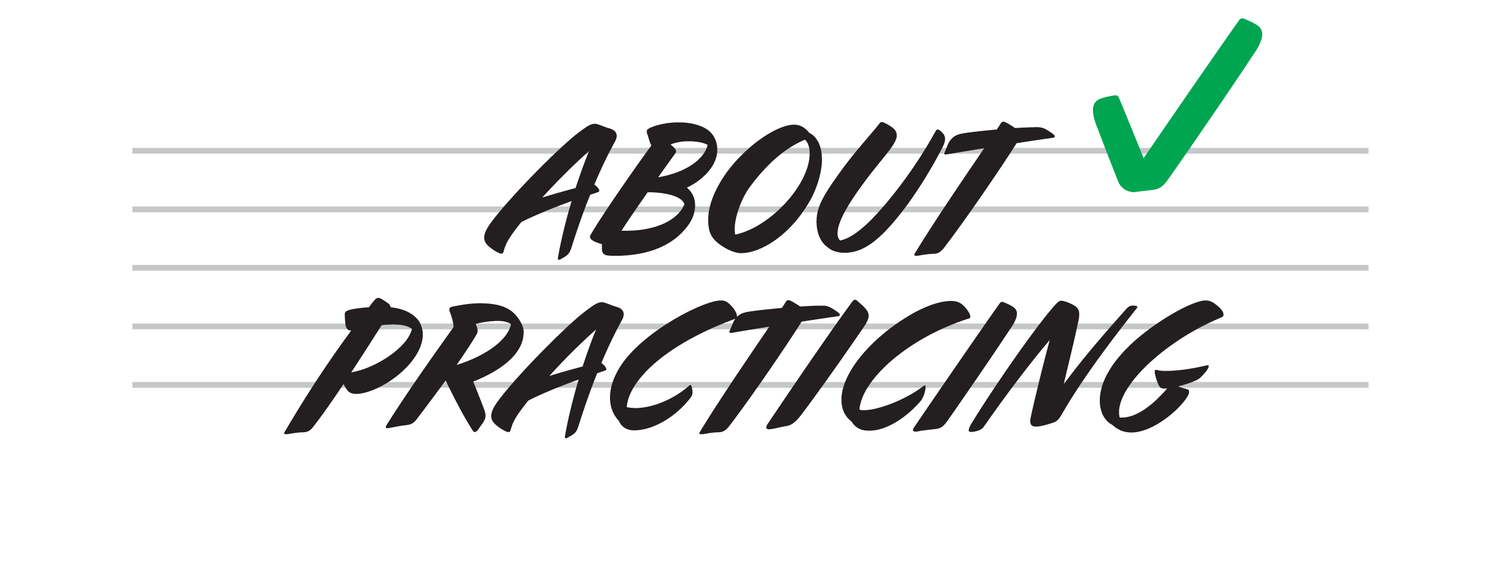Exercises
I was struggling with an exercise designed to help me develop consistent speed with a violin bow (and thinking about how useful a bow speedometer would be) when this occurred to me: An exercise is not a series of notes. An exercise is a series of movements. The idea sounded good, but I couldn't tell at first how useful it was.
An exercise, as opposed to a piece of music, is usually written as a way to help a student learn or practice something – how to control bow speed, for example. The musical content is secondary at best, and in my view that's fine. I don't want to be distracted by the music when I'm working on my bowing. The bowing, not the music, is the point of the exercise. The music will eventually emerge from the bowing, but it will never emerge without the bowing. And if I knew the bowing so well that I could play the music, I wouldn't need the exercise in the first place.
A good exercise is one that gets you to execute a specific set of movements over and over, with some musical window dressing to keep you from getting tired of working on it. My bowing exercise, for example, has a measure of slow movement, with four notes per bow stroke, then a measure of faster movement, with two notes per bow stroke. That bowing pattern repeats for the whole exercise, another 15 measures. There are variations in the notes played and the strings on which they are played; that's the window dressing. But the core of the exercise – fast bow, slow bow – is the first two measures. You could play those two measures alone over and over again and get 80% of the benefit of the exercise, without playing past measure 3.
Back to this: An exercise is not a series of notes. It is a series of movements. Is this useful? I think so. This is why.
It's good to know what you're doing: Playing a song is different from practicing a technique, as different as eating a pie and cooking a pie. If you want to do something right you have to know what you're doing. If it's an exercise, your project is not notes. It's movements. That's what you have to figure out and master.
Finding and then sticking to the point: My bowing exercise is 17 measures long. The core is in the first 2 measures. Usually when I tackle an exercise I first find the core (always a good idea and usually not hard) and work on it for a while before going on to the rest of the exercise. That way I know what I'm working on and don't get lost in the window dressing. In this case, the core involved only the right arm, so I ignored the left hand, notes and all, and worked with my bowing arm using just the open strings. Eventually I added back the notes in the first two measures; then I moved on to playing the rest of the exercise, But the core came first.
Savoring: Maybe it's just me, but I often find the physical aspects of playing enjoyable on their own. I like the contact of my fingers with the strings; I like the glide of the bow. I like the sound of the notes on their own, regardless of how they connect with other notes to form harmonies or melodies. These things can get lost if you don't look for them. An exercise as a series of motions provides an opportunity to look for them, savor them and, most importantly, use them to improve your playing.
Showing the proper respect: If I'm playing a song, as opposed to an exercise, I want to honor the composer's intent as well as I can. However much I work on it, the end I have in mind is to be able to play the song all the way through. Even if I break it into pieces while I work on it, my goal is to put the pieces back together in performance. On the other hand, If I'm playing an exercise, I honor the composer's intent by learning what he/she designed the exercise to teach me. If I master the technique without ever finishing the piece, that's OK. I'm showing the proper type of respect.
Much of what I have learned and written about practicing comes in the form of aphorisms like this one. They're easily understood and easily evaluated. If one of them rings a bell for you, you can put it to work, and if it doesn't, you can set it aside. Often they are no more than slightly different points of view - “Hey, stand next to me for a minute and see how things look from over here.” This one is like that. An exercise is not a series of notes. It is a series of movements.
